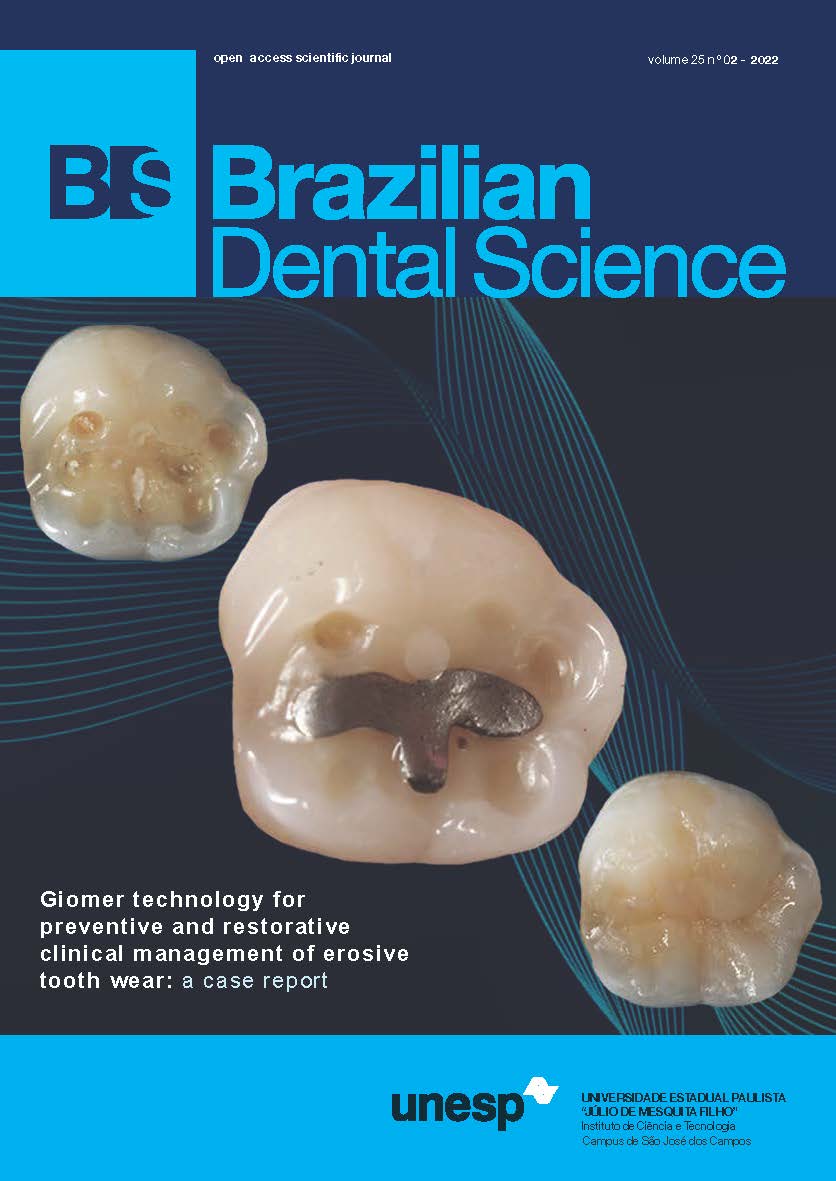Color and surface gloss stability of bis-acryl and resin composite after exposure to cigarette smoke
DOI:
https://doi.org/10.4322/bds.2022.e3081Abstract
Objective: To evaluate color and surface gloss stability of bis-acryl resins and resin composites, submitted to artificial
staining with cigarette smoke. Material and Methods: Specimens of each material were prepared (n=15). Two resin
composites (GrandioSO [RCG], Filtek Supreme [RCZ]) and five bis-acryl resins (Luxatemp Star [BisLUX], Protemp4
[BisPRO], Structor3 [BisSTR], Visalys Temp [BisVIS] and Yprov [BisYPR]) were tested. Initial color was assessed using a
spectrophotometer and surface gloss with a glossmeter. Samples were submitted to smoke exposure (10 cigarettes under
8 minutes per cycle). After 3 and 6 cycles, color and gloss were reassessed. Final readings were performed after brush
prophylaxis. Data were analyzed using two-way repeated ANOVA and Tukey’s test (p<0.05). Results: Differences and
interaction of factors (p<0.01) were detected for both color and gloss readings. Resin composites were the least affected
by aging, with gloss reduction after prophylaxis. Differences were detected among bis-acryl resins, with better results for
BisLUX and BisPRO. BisPRO and BisSTR, showed reduction in gloss after 60 cigarettes, while BisYPR gloss decreased at
all evaluated periods. Conclusion: Resin composites are less susceptible to changes after smoke exposure, while bis-acryl
resins results are brand-dependent. Prophylaxis negatively influenced the surface gloss of most of the tested materials.
KEYWORDS
Bis-acryl resins; Color; Composite resins; Smoke; Temporary dental restoration.
Downloads
Downloads
Published
How to Cite
Issue
Section
License
Brazilian Dental Science uses the Creative Commons (CC-BY 4.0) license, thus preserving the integrity of articles in an open access environment. The journal allows the author to retain publishing rights without restrictions.
=================




























